Trust and Perception - Zero-Knowledge Proofs

 Image: @iamhappytoast Can you hear this GIF?
Image: @iamhappytoast Can you hear this GIF?
Believe none of what you hear
and
Believe some of what you see
Minimizing trust in perception
By Juan SIlva @ertwro
Based on Dr. Matthew green's blog[1] and Dr. Elliot D. Freeman's[2] research

| Highlights: 1 → Visually Evoked Auditory Reponse: Our senses work together, in a multimodal fashion. Unreliable yet useful. 2 → Alterations in Perception: When the input of that stimuli is not clear artifacts appear 3 → Reflexes: There are different stages of feedback for such stimuli, all of them automated by optimization 4 → Zero knowledge proofs: A mathematical bypass for the implications of proving to someone who sees the world in a different way that something is true 5 → Conclussion |
 vEAR n the opening gif I asked you if you could hear that gif. Around 70% people in a twitter survey responded that they can. This was made famous by Dr Lisa DeBruine who twitted about it. 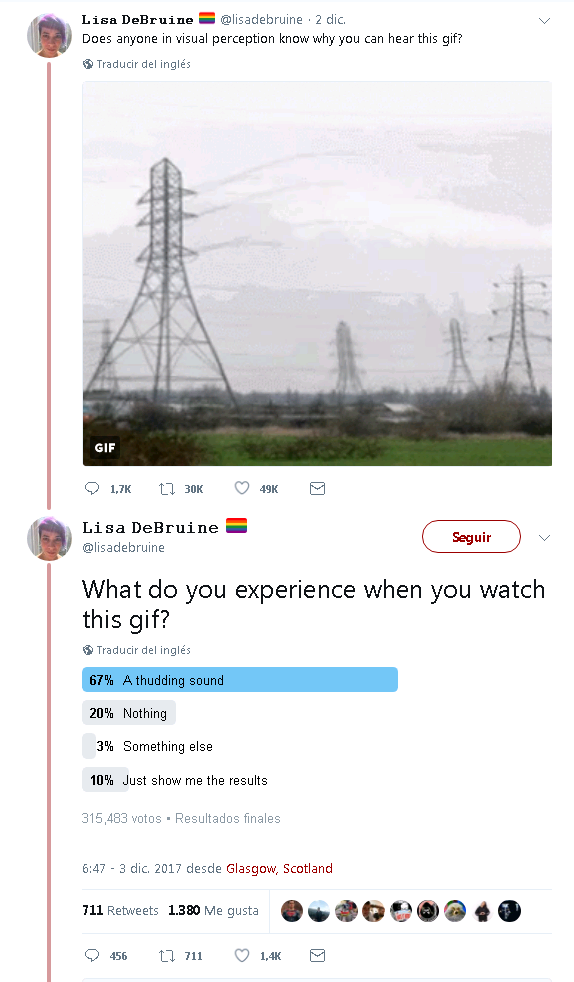 This evoked response is a mild form of synesthesia. First described in 2008.[3] Not properly it but a reflex form of it. This is what is called a Visually-Evoked Auditory Response (vEAR). Are these people just agreeing on it or are they really hearing this? There are neurologic reasons for believing they actually do.[4] Neurologic feedback loops compete for a definite answer to multimodal sensory inputs. One everyday example of this is the McGurk effect, where the same piece of information is affected by the auditory stimuli being combined with a similar competing signal.[5]  The audio emited is the same through out the clip The audio emited is the same through out the clipWhat changes is the visual input. From Ba, to Pa, to Fa |
It has some interesting consequences. E.g. Desynchronizing audio from video as a learning tool. For instance, we know that delay in auditory stimuli helps improve comprehension. Useful in the case of people learning a new language.[6]
We are sure this happens due to Electrophysiologic recordings of Visually evoked potentials. Evoked potentials are monitored the objective response of an individual to sensory stimuli. Like is the case for hearing loss or multiple sclerosis(Auditory Brainstem Response) and alteration in the visual pathway (Visually evoked potentials).
Such tests would allow finding that a person indeed is observing such a thing. Although useful for us it would not help the patient on its own.
Alterations in perception are far more common than people would normally realize.

Alterations in Perception

 Just some tasty apples. with interesting colors. That would appear the same for some people
Just some tasty apples. with interesting colors. That would appear the same for some people
|
Suppose for a moment you are in the market buying fruits. You smell apples, turn and see a group of them. they look great so you pick a couple for an apple pie. You head to the counter and as you try to pay, you notice there's something weird about the price.
It's actually more expensive than you thought. The seller kindly tells you - there's no mistake, you have green and red apples. Their price is not the same - which surprises you as don't understand what the person in front of you is telling you. All the apples have the same color. You checked back when you took them and they are in front of your own eyes! You argue and people around you think you are crazy as they can perfectly see the difference. What's going on? A prank? At home, you tell the story just to find everybody confirms that, in fact, the apples are not the same color. Are they deceiving you? How can you trust them? So you go and check the internet, learn about color blindness and check a doctor, Everything confirms it, but can you really be sure? |
|
This is important in the sense of discussing from first principles. Even when someone experiences something that goes against their core beliefs if done in a way that allows for safe experimentation of decision making. Without engaging the person through interaction and thought experiments no learning and desensitization can occur. It must be gradual in order to build growing coordination.

Zero-Knowledge Proofs

s like a magic trick in a theater. How do you know the magician and the person selected at random from the public are not colluding, that the person in the public is not actually a rival magician trying to steal the trick/ruin it in front of everyone else, that there's really a trick in the first place?
From an observer's perspective, how could you trust the prover and the verifier?
This is something that mathematicians solved back in 1985,[y] in the form of interactive proof systems with zero-knowledge. Later to advance in the form of non-interactive zero-knowledge; 3-coloring; Schnorr, Groth-Sahai, and zk-SNARKs.
Zero-knowledge proofs are methods where one party can prove another interested actor that one statement is true without conveying different information to the fact the statement is true.
Zero-Knowledge proofs:
- Completeness: The participants are convinced beyond reasonable-doubt by probabilities eventually if the prover is honest.
- Soundness: The prover can only convince you if he knows the real answer (only one chance)
- Zero-Knowledgeness: The verifier learns nothing while verifying except that the information is correct.
One of the classic explanations on this subject is the 3 coloring scheme. You can find an in-depth intuitive review by Dr. Matthew green, but roughly speaking:
Suppose you hire google to solve the distribution of bandwidth in 3 channels for a huge cellphone network so that no two adjacent colors the same.
How can you be sure that they have computed the problem without them revealing the full answer so you can check? The original solution involved a type of closed room. Where google would the solution covered by hats. Then you would enter there and uncover at random 2 hats. If the adjacent colors are equal you would know they are lying. If they are different you would gain a little more trust in them. This process would repeat until you, the verifier, are satisfied (probabilistically speaking).
Although the context is different and an analogy might be an overstretch. When scientists teach non-experts that are skeptics or in denial of a subject, where the body of evidence is sound but is against the core of the verifier's interests, what the scientist hopes to perform is a zero-knowledge proof.
Normally in a zero-knowledge proof, the prover has a bigger computational capacity and preparation than the verifier.
He can't teach in minutes the years of evidence and expertise in order for the person to understand or accept the proofs. Yet he can share portions of the information that he wouldn't be able to obtain otherwise by faking it. 1 If the scientist is honest (appeals to nothing except evidence) he will eventually convince them 2 He can only convince them if the science is true 3 the person accepts the information as true regardless of how it affects their self-interests.
The concept is so anti-intuitive that cryptographers struggle to find a good analogy.
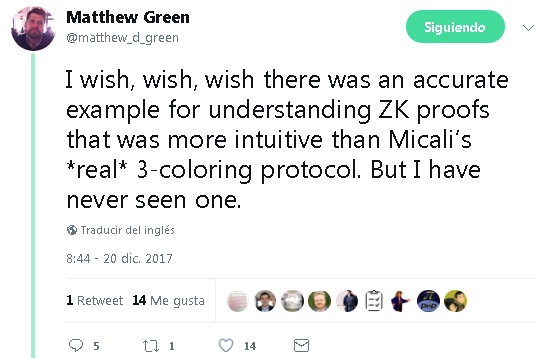
Yet that's maybe the most telling aspect of this. Science is anti-intuitive. If someone lacks the ability to determine if something is true or not, there are still ways to approach this problem. Avoiding the pitfalls of triggering erroneous impulses or activating non-rational responses.

Conclussion

here are many people that have strong opinions against choices based on science. Many stimuli trigger similar activation pathways, confounding the subject but he doesn't understand the confusion.
Identifying the mixed signals and cleaning the channels of interaction is the first step.
This is like an immune system response, but at the behavior, level rooted in the nervous system. Just like in the immune system desensitization is the first step to allow continuous exposure to a new element.
We sometimes create more harm than good by engaging in conversations where computation from the verifier is limited. This is disingenuous and creates more harm in the long run.
This desensitization only requires the verifier to bypass their senses and obtain the proof that what is being shared is true. Any further understanding will require resources from the verifier that now has a party he can trust a little more. Giving them the gift of experiencing reality in a little more vivid way.

REFERENCES:
[1] Zero Knowledge Proofs: An illustrated primer. Matthew Green in fundamentals November 27, 2014. e-Pub
[7]Hart, W. M., Jr. (1987). Acquired dyschromatopsias. Survey of Ophthalmology, 32(1), 10–31.
[8]Gordon, N. (1998). Colour blindness. Public Health, 112(2), 81–84.
# Some of my other posts:





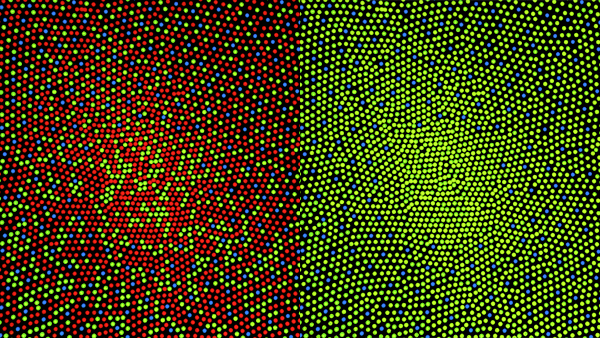
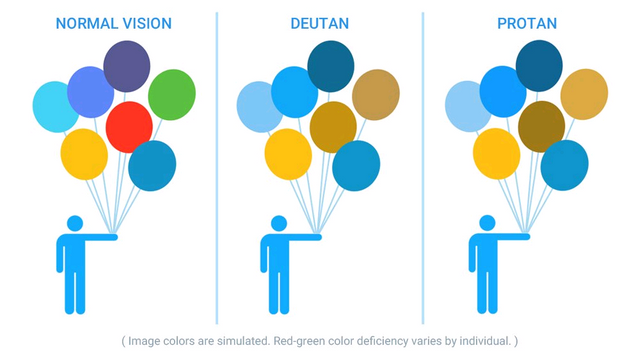

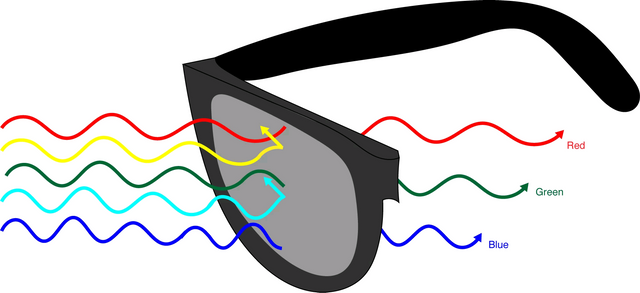

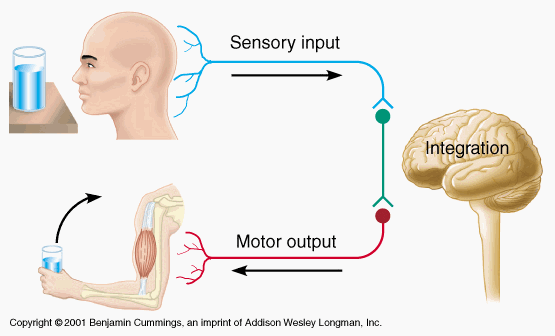
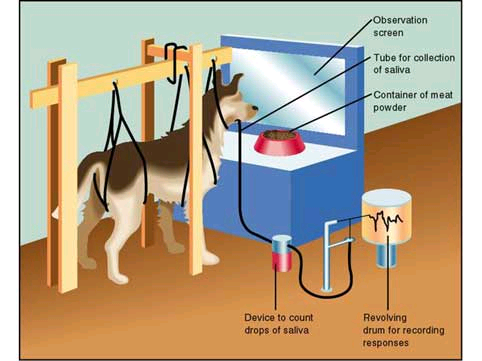



As a physicist of the microscopic world, I fully agree with this conclusion. It is not because we feel that something works in some ways, that it does.
PS: your references are maybe a bit small for my poor eyes :)
Yeah, I think I went too far with the size of the references. Bad choice in design not wanting it too look too cramped. I hope is better now.
Thanks for the refs. It looks bigger than what I remind from the previous version. Maybe one more step bigger? (I am almost blind :p )
Sure, I've also modified the code so my future posts will have a bigger font. I just like changing the HTML, It could get annoying for my reader, I know. Thanks for the feedback.
your post is very good, very useful, your post is so inspiration for me and all users of steemit, I am proud of you ... I am amazed to you, you are very fantastic in making a post, hopefully triumph in the work .. Thank you 💏😘
Wow, perception is definitely reality but after seeing this post, my perception could be incorrect.....your mind tends to create a different sensory experience once you have seen a picture/video.... my mind wanted to add sound when there was none or it interpretted things differently when viewing the input..... interesting to think how the mind is capable of changing the way we interpret and "see" things compared to what is actually being presented...
Reminds me of how 3D films are created, there is one movie screen but when wearing those 3D glasses, our minds actually create a sense of dept and 3-Dimentionality..... really interesting to consider perception versus reality....
If a human being did not have their 5 senses, would they still be human? Do our senses make us human because this is how we interact with the world.....what/how would life be if some or all of our senses were missing?
Is actually a similar technology. In this case, it uses particular types of metals but the physical principles are the same.
Yeah, its interesting to think how our brains interpret things. Thank you for the good content
This was a great article, both the content as well as the links and videos provided were informative and fun to watch.
It also helped me to gain some insights into the nature of discussing rational topics with non-rational entities, something I've been thinking about and might write a post about sooner or later.
Thanks a lot for the article!
Is just an interesting thought. Thanks for passing by.
I agree with you, it is not useful to participate in situations where the perception of the problem is limited but how could we efficiently avoid it?
The hell are you talking about? that's not what the post says, is the actual opposite.
Also, I didn't understand it
Very much informative post
Disclaimer: I am just a bot trying to be helpful.
Nice. Thanks, twitter bot.
Great post there, keep up good work !
This replay was created using STEEMER.NET Alpha ( support STEEMER.NET Transactor / Wallet / Exchange Project here: https://steemit.com/investors-group/@cryptomonitor/steemer-net-steem-blockchain-transactor-for-windows-android-app-funding-update-243-1200-sbd-28-12-2017 )
The first time I saw this gif I actually "heard" a thump every time the pylon landed.
I can actively choose to hear it and not hear it.